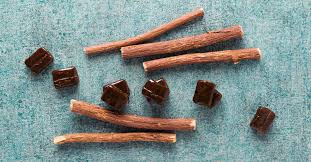
Breaking News
 Year-Over-Year Existing Home Sales Disappoint In November, Decline Most In 6 Months
Year-Over-Year Existing Home Sales Disappoint In November, Decline Most In 6 Months
 Loss Of Credibility: Yen Craters, Yields Surge After BOJ Hikes Rates To Highest Since 1999
Loss Of Credibility: Yen Craters, Yields Surge After BOJ Hikes Rates To Highest Since 1999
 DOJ Releases Epstein Files, And [REDACTED]
DOJ Releases Epstein Files, And [REDACTED]
 Putin Identifies The Main Issue Which Will Settle Ukraine War In Year-End Q&A
Putin Identifies The Main Issue Which Will Settle Ukraine War In Year-End Q&A
Top Tech News
 This tiny dev board is packed with features for ambitious makers
This tiny dev board is packed with features for ambitious makers
 Scientists Discover Gel to Regrow Tooth Enamel
Scientists Discover Gel to Regrow Tooth Enamel
 Vitamin C and Dandelion Root Killing Cancer Cells -- as Former CDC Director Calls for COVID-19...
Vitamin C and Dandelion Root Killing Cancer Cells -- as Former CDC Director Calls for COVID-19...
 Galactic Brain: US firm plans space-based data centers, power grid to challenge China
Galactic Brain: US firm plans space-based data centers, power grid to challenge China
 A microbial cleanup for glyphosate just earned a patent. Here's why that matters
A microbial cleanup for glyphosate just earned a patent. Here's why that matters
 Japan Breaks Internet Speed Record with 5 Million Times Faster Data Transfer
Japan Breaks Internet Speed Record with 5 Million Times Faster Data Transfer
 Advanced Propulsion Resources Part 1 of 2
Advanced Propulsion Resources Part 1 of 2
 PulsarFusion a forward-thinking UK aerospace company, is pushing the boundaries of space travel...
PulsarFusion a forward-thinking UK aerospace company, is pushing the boundaries of space travel...
 Dinky little laser box throws big-screen entertainment from inches away
Dinky little laser box throws big-screen entertainment from inches away
 'World's first' sodium-ion flashlight shines bright even at -40 ºF
'World's first' sodium-ion flashlight shines bright even at -40 ºF
Research reveals licorice's potential to fight breast cancer

A groundbreaking study published in the Journal of Biomolecular Structure and Dynamics suggests just that — revealing how a natural compound found in licorice root might be a powerful weapon against breast cancer.
The sweet science behind glycyrrhizin
Glycyrrhizin, the active ingredient in licorice root responsible for its sweetness, has been used for centuries in traditional medicine to treat everything from sore throats to digestive issues. But now, researchers are uncovering its potential as a natural cancer-fighting agent. (Related: Licorice contains powerful cancer-killing phytochemicals.)
Using advanced computer modeling and bioinformatics — a subdiscipline of biology and computer science that uses software tools to analyze and interpret biological data — Iranian researchers mapped out exactly how this compound interacts with breast cancer cells, and the results are promising.
The study dug deep into the molecular pathways glycyrrhizin takes to combat cancer. Specifically, it focused on the breast cancer genes glycyrrhizin targets and how the compound interacts with the genes' protein products.
Of the 10 breast cancer-related genes the researchers looked at, they found that glycyrrhizin showed the highest binding affinity to three genes, namely, POLK, TBXAS1 and ADRA1A. These genes are active in three types of breast cancer: breast carcinoma, malignant neoplasm of the breast and triple-negative breast neoplasms.
The researchers reported that the protein products of these genes "had an association with [breast cancer] at several stages of tumor growth." By binding to and influencing the activities of these targets, glycyrrhizin is able to influence and control breast cancer growth and survival efficiently.
Molecular dynamics simulation also revealed that of the three interactions mapped out by the study, the destructive pathways triggered by glycyrrhizin's binding to ADRA1A had the highest likelihood of occurring.



